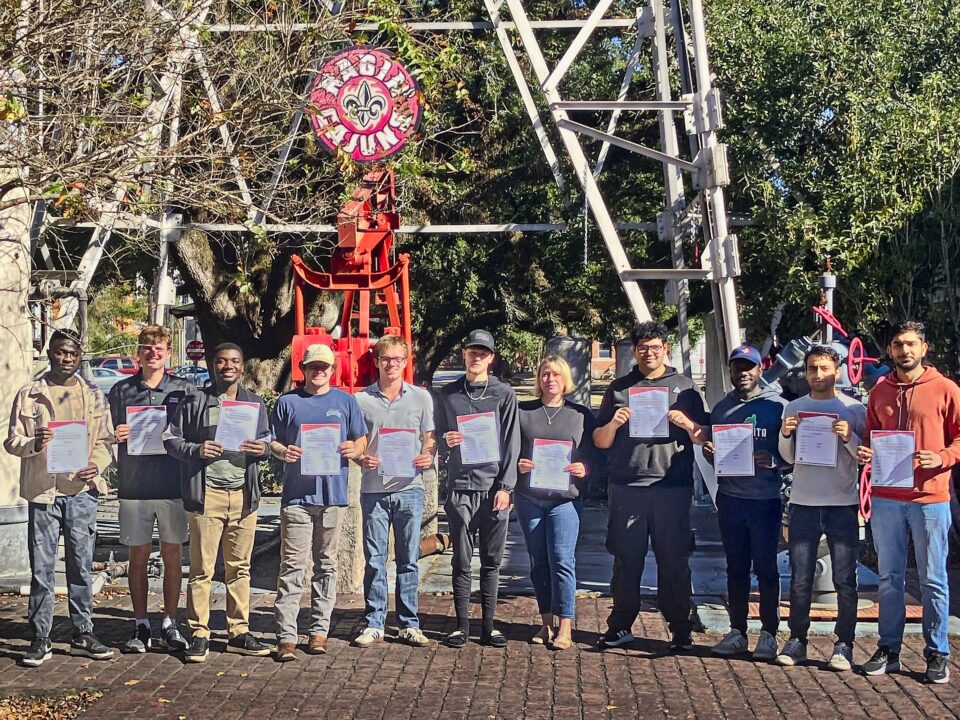May is Mental Health Awareness Month in the United States. Since its inception in 1949, this annual observance has aimed to reduce stigma and promote open conversations around mental health conditions.
As defined by the Substance Abuse and Mental Health Services Administration (SAMHSA), “Mental health includes our emotional, psychological, and social wellbeing. It affects how we think, feel, and act, and helps determine how we handle stress, relate to others, and make choices.” These factors ultimately influence our relationships, productivity, and overall quality of life.
Additionally, the Occupational Safety and Health Administration (OSHA) recognizes that mental health is “…an important component of overall wellbeing and is equally as vital as physical health for all employees.”
The International SOS Foundation released a 2021 research study, as described in the article “Mental Health Vulnerabilities for Remote Rotational Workers,” which found that 40% of the offshore and onshore remote rotational workforce surveyed experienced suicidal thoughts some or all of the time while on duty. This figure it staggering compared to the global average of 4-9%. Furthermore, nearly 1/3 of respondents met the criteria for clinical depression while on rotation.
A recent article from Drilling Contractor titled “Seadrill tackles employee mental health and wellbeing amid growing need for action” explains:
For employers, this can mean unhealthy employees and decreased productivity. Especially for remote rotational workers like rig crews, mental health challenges can be exacerbated by factors associated with oilfield life: the remote and isolated locations; confined work and living spaces; separation from family and friends; regular and prolonged periods away from home, to name a few.
While the energy industry has historically concentrated its efforts on physical health and safety protocols, there has been a growing recognition of the pivotal role mental health and wellness play in overall worker wellbeing and operational success. Although mental health and wellness are crucial issues in their own right, they are also inextricably linked to and greatly influence the effective implementation of physical health and safety practices. By prioritizing mental health alongside physical safety measures, companies can foster a more holistic and sustainable approach to creating a productive and resilient workforce.
Many companies and organizations are already implementing steps to prioritize the mental health of their employees. The aforementioned article in Drilling Contractor describes Seadrill’s efforts to encourage mental health and wellness among employees. These efforts include:
- Implementing the “BeWell Program” in 2019 focusing on four pillars: emotional/mental health, social health, physical wellbeing, and financial security (focusing on one pillar per quarter)
- Formalizing an Employee Wellbeing Directive in 2022 to account for mental health in company policies like the Behavioral Framework, Health Policy, and Diversity Policy
- Incorporating mental health into the overall company strategy
- Supporting employee participation in the “RigRun” global program to promote physical activity and social bonding among offshore crews
- Standardizing psychosocial surveys across global operations in 2023 to collect data on employees’ mental and physical health to design targeted wellbeing programs
- Emphasizing the importance of frequent and consistent communication about mental health topics to create an open dialogue and community around wellbeing
- Encouraging senior leaders to share personal stories and role-model wellbeing behaviors to promote mental health awareness authentically within the organization
Another article by Drilling Contractor, “Drilling Ahead: Companies can drive success, add value by embracing neurodiversity,” discusses the concept of neurodiversity, which explains that people’s brains are wired differently, leading to variation in how they experience the world and social interactions. The article provides guidance on creating a neuro-inclusive workplace, such as encouraging self-identification, making adjustments, focusing on results over process, avoiding assumptions about behaviors, and accepting neurodivergent traits. Recognizing and embracing neurodiversity can lead to greater employee wellbeing by creating safe and inclusive environments where they’re encouraged to show up as themselves, which ultimately benefits and adds value to the company as well.
IADC’s North Sea Chapter has been spearheading a cultural shift in how industry faces mental health challenges through the Mental Health in Energy Initiative. Efforts include drafting a white-paper on the subject, hosting a workshop with roundtable discussions, and creating and garnering support for “The Mental Health and Well-Being Charter.” In the next phase of development, as explained in an article by Energy Voice, the IADC North Sea Chapter plans to team up with other organizations to create a survey and asses the mental wellbeing among the North Sea workforce.
As the industry continues to explore mental health and wellness in the workplace, a mindset of compassion, flexibility, and inclusivity will be crucial. There is no one-size-fits-all solution, as the needs and experiences of each worker and workplace are distinct. However, by remaining open, educating ourselves, and taking incremental steps, we can collectively build workforces and work environments that prioritize the complete wellbeing of all.




